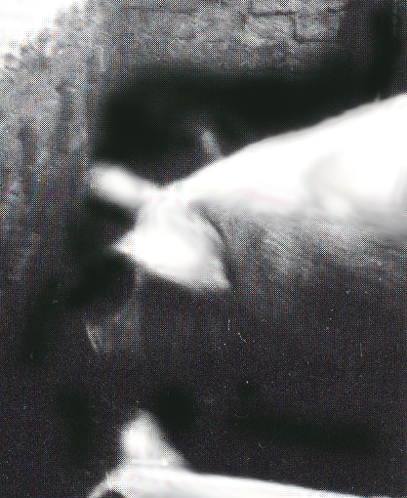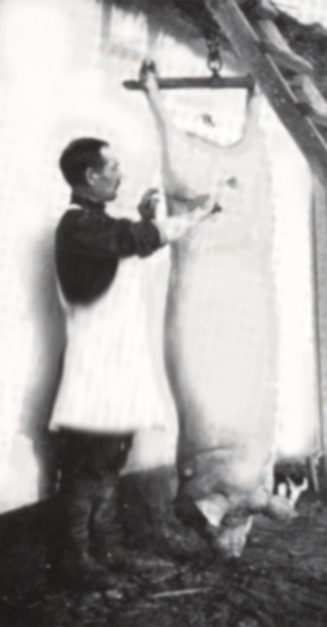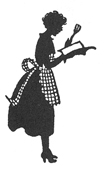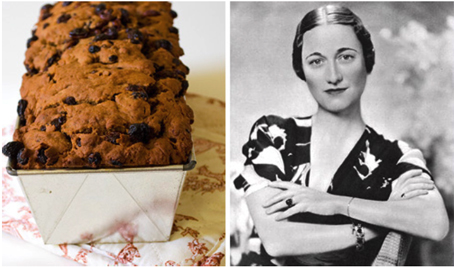Last Updated: 5 May 2012
.
Johannes Bippus' Pigs, Borodino/Bess. S. Russia

Jakob Hoeger's Pig Being Butchered in Borodino/Bess. S. Russia
Additional pictures can be found on page 152 in
Ernst Hoeger's book 175 JAHRE BORODINO, 1814 BIS 1989
Crimea - 1902
Blind and Grischkowski Families
***************************************************************
In a message dated 5/30/07 10:07:04 AM:
Here are some thoughts about butchering:
A small few of our GR people still do their own butchering but few still raise hogs. Those few who do are apt to take their hog to the local locker plant to have it butchered, cut and wrapped.
Butchering was an activity necessary to survival when there were no locker plants and most of our people were agrarian.
Hogs were kept on every farm and at least one, and maybe several, were destined to be butchered at home for family consumption.
Butchering day came in late fall or early winter. There being no refrigeration, it was necessary to do it when the weather was cold. The day was always looked forward to with excitement and trepidation. The hog selected for slaughter were old fashioned fat varieties which we don't usually find today. A fear of cholesterol has caused the modern hog to be slimmed down. Today most hogs are commercially slaughtered at about 240 pounds but the old timers preferred a hog weighing over 300 pounds. The idea was the more fat the better. Fat was needed so the "wurst" wouldn't be too dry. Women also bragged about how much lard they had rendered from one hog.
Neighbors and kinfolk showed up on the big day to help.. You would go to their place and help them in return until all in the neighborhood were done butchering. At the farm where the hog was to be butchered the "kessel" in the summer kitchen or the big cast iron kettle in the yard were filled with water and a fire built under it to heat the water long before daylight. The water then could heat while the cows were milked and other chores were done.
As soon as the water was hot so the hog could be scalded, someone had to crawl in the pen and hit the hog between the eyes with a crowbar or sledge hammer. Some shot the hog with a 22 rifle. The throat of the hog was slit so it would bleed and the hog was hoisted up by the back legs until it was done thrashing around and bleeding. It was then scalded in hot water to loosen the hair. Old fashioned round hog scrapers and sharp knives were used to scrape the hair from the hog. The pigment in the hog's skin came with the hair. Everyone worked fast and furiously before the hog cooled off and the hair would "set up"
Once scraped, the hog was again hoisted by its back legs and any missed hairs were singed and the hog was given a bath with hog soapy water and a stiff brush. Then someone skilled at the job was elected to split the hog open and remove the entrails. These were saved in a washtub, liver, heart, kidneys would all be saved to eat and the women would take the intestines and clean them out to be used as "casings" to stuff for the wurst.
I might add, some GR people saved the blood from when the hog was bled. They caught it in a bucket while the hog was being bled. Someone, usually a child, was set to work stirring the blood in the pail so it would not coagulate. It was then rushed to the summer kitchen where the women would add "gritz" or barley to it and it was made into "blut wurst" (blood sausage). Some did not make this however because they had an aversion due to religion to "keep from blood" as the Bible says.
Once the entrails were cleaned from the hog, the inside cavity was washed out with a pail of water to remove any blood. The head was saved and would be used to make headcheese or "Gritz wurst" and the rest of the hog was cut up into manageable pieces. Pieces that would be used for chops or put into wurst had the "Svarten" or rind removed. This was saved as a necessary ingredient in liverwurst and gritzwurst. The rind was left on any pieces used for ham or bacon. These pieces were allowed to cool and then were soaked in a pickle and after several days in "cure" were put in the smokehouse.
Very little meat seemed to be saved as porkchops and roasts like we eat today. Most of it was used in the wurst. The meat had to cool in order that it would cut well so while it cooled, there was plenty else to do with cleaning the intestines, tending to the blood, cleaning up the heart, liver, etc. The head had to be split, the teeth removed, brain taken out, (to be used later as fried with onions and scrambled eggs) The head was put in a huge kettle along with the bones once the meat had been removed from them. This was all boiled down to remove any remaining meat on the bones. Once the headmeat had cooked until it fell from the bone, the skull was scraped, this meat, some of the cooked porkrind was ground with spices and cooked again with some of the "brea" or juice from the cooking of the head and was made into headcheese. Some call it scrapple, others put this concoction in hog casings and called it gritzwurst.
Once the meat had cooled and was cut from the bone, it was cut up into small pieces and mixed with a certain percentage of fat. Usually Ũ lean to Ũ fat. Each family had their own wurst recipes which were well guarded secrets. The meat was ground with the sausage grinder, spices added, the meat mixed in a large tub, and then it was all ground a second time. This seasoned sausage meat could then be either stuffed into casings, or some was made into patties and fried. There was always some fried in patties immediately so you could "taste" what this year's wurst was going to taste like.
Any sausage fried in patties was put in a scalded stoneware crock and then when the lard was rendered hot lard was poured over the meat. This jar was put down cellar and whenever you hankered for some sausage for breakfast or a snack, you fished into that crock of lard which had set up and pulled out a patty to eat. (I might add no one ever died from this lack of refrigeration. The old timers had tough constitutions.)
Intestines which had been turned inside out to scrape the you know what out were washed in water and put on the stuffer spout. Rings of bologna, or brats were made. If you had also butchered a beef, a certain portion of beef was mixed with the pork and you made sommerwurst which was well cured and kept without any refrigeration. This summer sausage once cured was either stored by hanging from the rafters or was buried in the oats bin and could be kept until summer time.
Some people cut chunks of meat up and canned it in jars. This was especially so if a beef was killed as you couldn't keep beef the way you could pork.
Butchering was not a one day affair but it took several days to finish up with all the things made from the hog. The last thing done was the rendering. All fat not used in the production of the bologna or wurst was cut up, ground with the sausage grinder and rendered in the large cast iron kettle in the summer kitchen or out in the yard. My mother always rendered hers in a large roaster in the oven.
This fat melted and was cooked and cooked slowly until all the water had been evaporated which was trapped in the fat. Once the water was rendered out, the grease would keep. This lard was used for all cooking. No Crisco or virgin olive oil for our people! This grease was "good for the heart bearings" they used to say. Many remember taking fresh hot lard and smearing it on bread and eating it straight. Now doesn't that want to stick to the roof of your mouth.
You could tell when the lard had cooked long enough because the "Greipen" or cracklings would float to the top, golden brown. There was a fine line here and the lard had to be watched closely so it wouldn't scorch. You stirred continuously so the cracklings wouldn't stick to the bottom of the kettle. Once the cracklings floated for a while they would suddenly start to sink again. This was the moment you had waited for for hours and hours. The grease was then removed from the heat and was ready to cool a bit before storing it away in crocks or jars. This hot grease too was poured over sausages and pork chops which had been already fried and were stored away in crocks of grease and could be eaten all winter.
My mother and many poorer families carried lard sandwiches to school in their dinner buckets. I don't suppose it was any worse for them than our modern oleo. People in those days worked hard and burned the calories off. They could eat differently than we do and get by with it.
Lard was then put in crocks and cooled. Some put it in a fruitjar and sealed it. Lard kept in jars like this will keep for years. We still do that. Once the butchering was done, then you could talk about it. Men bragged about how fat their spring pig had been and the women were so proud of how many gallons of lard they had rendered.
Usually if there was lard left over from the previous year's butchering, once it had been replenished with fresh lard, the old lard was made into soap. Beef tallow was also rendered to be used for soap. Very few people used beef tallow for cooking though the Hutterites were and still are fond of using it to make buns.
Most GR people highly favored grease rendered from ducks and geese to be used to make the lightest and best buns.
Once all the sausages, bacon and hams were smoked, they could be hung from the ceiling of the cellar or in a cold attic. This meat kept unrefrigerated though when REA came, most of us began putting our meat in the freezer even if it had been "cured."
Another big event was in the fall of the year when we'd butcher ducks and geese. This was an especially looked forward to time. This usually occurred while the menfolk were picking corn, sometime in November. The ladies took care of this on their own. Ducks and geese were kept by all GR people as their meat was highly preferred to the chicken we eat today. Many women raised hundreds of ducks and dozens of geese. There's not, after all, a lot of meat on one duck and with big families you could go through several at a meal.
This day too began well before sunup when water was heated in the kettle to scald the ducks. After chores and breakfast, neighboring women would show up with kids in tow to the farm where they would butcher that day. The ducks and geese were penned up. The heads were removed either by ax or a sharp knife. The birds then could be scalded and plucked though some people preferred dry picking them. If you planned to sell them to a kosher market they had to be dry picked.
We always scalded ours because it was reasoned the feathers had to be washed anyway. Big feathers like wing and tail feathers were thrown away but the finer back feathers and breast feathers were kept to sell to the Jewish feather buyers or were kept to be made into pillows and featherbeds. If you had a large family of girls, you needed a lot of feathers to set her up in housekeeping when she married.
The ducks were picked, singed, given a bath in hot soapy water with a stiff brush and then gutted. They were washed again and some were sold to town, or they were kept in cold storage until they could be eaten. Some women canned duck and especially goose. Here too, nothing went to waste. Fat from the entrails was saved, rendered, and used for cooking. The feat were scalded and skinned. The toenails chopped of and the feet were put in noodle soup. They had a gelatinous quality that made the soup nice and thick. Some people kept the heads, cleaned them and ate them too. This was a treat among the Hutterites and they often had duck heads for breakfast once butchering was over.
It might take several days to get all your ducks butchered and then it was off to the neighbors to exchange the favor. Duck butchering could last from the first cold weather until Christmas.
I might add that most GR people felt that the dark feathered ducks picked better than the white pekin type which is so prevalent today. The truth is they all pick poorly. It was also believed and I think there's truth to this, or at least my wife says so, that the ducks and geese picked better if there was snow on the ground. They wouldn't be so "strubbly" or pinny.
We used to hatch about 800 ducks a year and sold to different neighbors who would fatten them. We kept about 100 for ourselves to eat or sell to people in town. We don't raise so many anymore, just a few for ourselves, the Christmas goose for a few old timers who still want a farm goose for Christmas, and we call it quits.
We don't eat and work like we used to. Our forefathers never wasted a thing. It was always said everything was used from the hog except the squeal.
Neither do we work like we used to. That too, is sad. For the German, work was pleasure. It also brought families and neighbors together; Something that doesn't happen much anymore. I don't suppose we will return to such a lifestyle at any time in the near future but it is fun to reminisce.
Dan
***************************************************************.

The following are recipes one would need to make after butchhering, or, when cooking the goose, pig and the other creatures we eat.
Recipe #1: What to do with duck or goose grease? - Menno, SD
Recipe #2 How do you render lard? - Menno, SD
Recipe #3: PORK CAKES #1 -Menno, SD
Recipe #4: PORK CAKES #2 - Duchess of Windsor's
Recipe #5: PORK CAKES #3 - German Loaf
 Recipe#1
Recipe#1
***************
Hello,
DUCK OR GOOOSE GREASE
You might add a note under the roasting duck or goose, to save the grease from roasting the duck or goose and strain through a sieve while still hot. Save this goose or duck fat to use when baking bread or buns, etc.. Nothing makes a finer lighter baked product than duck or goose fat.
Too, some may be interested in a recipe to render lard.
 Recipe#2
Recipe#2
HOW TO RENDER LARD
Take pork back fat and cut it into very small pieces or grind the fat in your meat grinder using a coarse plate.
Lard can be made from the fat trimmed from the hogs back or from the leaf fat that surrounds the entrails and is found in the hog's body cavity. This leaf fat makes excellent lard, but melts at a different temperature than the back fat, so render leaf fat and other fat separately.
Put the ground fat in a heavy kettle to render on top of the stove. (In the olden times lard was rendered in the big old fasioned cast iron cauldrons or rendering kettles over an open fire or over a wood fire in the the "kessel" in the summer kitchen or in the "black kitchen" in the old German Russian style houses.
A cast kettle works best but is not necessary. A lighter metal kettle can be used but the lard will need to be watched more carefully. Another way to render lard is in a roaster in the oven or in an electric roaster. If using the oven or an electric roaster set the temp at about 325.
Put the ground lard in the kettle or roaster and let a little melt. If rendering on top of the stove, stir frequently so it won't scorch. Once a little has melted, you can add enough ground fat to fill kettle 3/4 full. Continue to stir and cook. If doing in the oven, stir occasionally and leave roaster uncovered. Do not cover the kettle when rendering as the the moisture in the fat needs to be able to freely escape. Continue to cook and stir until all is melted and a golden color. Now if you're doing on the stove or in a rendering kettle, once it is melted, watch it carefully by using a little less heat. Good lard can not be hurried or it will scorch.
Keep cooking until the "greiben" or the cracklings begin to kind of brown and they will start to float. When the cracklings begin to float, watch carefully so it won't scorch. As soon as the cracklings have floated and they once again begin to sink, shut off the heat. Now it is ready to strain. Strain through a good sieve and a piece of cheesecloth. Years ago the cracklings were run through a lard press to squeeze the last bit of grease out of them.
This rendered grease will be a golden color while hot, but if you were careful not to let it get overly cooked, it will be a lovely white when cool. Take the clean strained grease and pour into hot sterilized fruit jars or into lard cans. We always put it in hot jars to within an inch of the top, wipe the rim and put a hot lid and screwband on the jar. When the jar cools it will seal and this lard keeps fine in the basement for months and months. If keeping in lard cans, or old coffee cans, you should store in a very cool place like a fridge or even in the feezer, though let it cool down and set up before trying to put it in the freezer or it will get grainy if it cools too fast.
My grandma used to put a large peeled raw potato in the hot lard while it was still rendering, when the cracklings started to float. This potato would cook and when it turned golden brown, she fished it out and removed the lard from the fire. She claimed the potato absorbed impurities in the lard. I don't know if that was so or not, just something she did. We've done it both ways and seems to be no difference.
Be sure to save those cracklings for use in other recipes.
Beef tallow can be rendered in this same fashion. Some people use beef tallow in baking buns. Beef tallow is also used in making soap.
When butchering poultry, you can save the good clean chicken, duck or goose fat and render it in the same fashion, though watch carefully so it won't scorch. It won't have cracklings like mammal fat.
I suspect that this home rendered fat wasn't as unhealthy for us as all this chemical enhanced artificial grease we consume now days.
Too, we have to remember our forefathers worked hard and they burned up the calories and fat from "rich cooking".
 Recipe#3
Recipe#3
Here's another old recipe some might enjoy trying:
PORK CAKE
A number of German Russian people used to make this pork cake in the fall about butchering time, several weeks before Christmas, then it would be somewhat aged in time for Christmas. A number of pork cakes would be made, and stored in tight tins. In the old days when people used to still visit, these pork cakes were stored away so you always had something on hand in case company would stop in as they will keep for months in a tight container.
Here's the recipe for old fashioned German Russian pork cake:
2 cups of ground pork fat. (If you don't butcher you can use fatback from the store)
1 cup of molasses or sorghum.
2 cups sugar
2 cups boiling water
2 eggs
1 T each of ground cloves, cinnamon, & allspice
2 tsp cream of tartar
1 tsp soda
1 pound of chopped raisins or 1/2 pound each of raisins and currants.
Enough flour mixed in to make it the consistency of a cake batter.
(Depending on your religious background, some made this same recipe by adding a half cup of brandy or rum to the concoction along with the molasses.)
Start with the ground fat and add the boiling water. Let this stand until cool. Mix in the molasses, sugar, and other ingredients. Adding a little flour and continue stirring until it is like a cake batter. Pour this into a greased and floured cake or loaf pan. Bake at 350 until you can insert a knife or a broom straw and it will come out clean.
This cake improves with age and keeps very well. Try it, you'll like it!
#1. #2 and #3 Recipes from Menno, SD
***********************
 Recipe#4
Recipe#4

When I surfed on the internet, I can up with an interesting article along with a recipe: The Duchess of Windsor's Pork Cake. Since the English House of Windsor was once the German House of Hanovor, I wonder it this same recipe came from Hanovor when King George I "the Farmer" , who was born in Osnabrueck in Lower Saxony, migrated to London and his royal line began to rule Great Britian in 1714..
Read the article when you have some time.
Evidently, the recipe is actually from the Duchess Windsor's book titled "SOME FAVOIRITE SOUTHER RECIPES OF THE DUCHESS OF WINDSOR " (Charles Scribner's Sons, 1942).
See: http://www.seriouseats.com/recipes/2009/07/the-duchess-of-windsors-pork-cake.html
>>Pork Cake
Adapted from Some Favorite Southern Recipes of the Duchess of Windsor
- yields 1 large loaf -
Ingredients
1/2 pound fat salt pork
3/4 cup boiling water
3/4 cup molasses
1/2 cup firmly packed brown sugar
2 cups raisins
1 cup currants, washed and dried
3 1/2 cups sifted flour
1 1/2 teaspoons baking soda
1 1/2 teaspoons cinnamon
1 1/2 teaspoons cloves
1 1/2 teaspoons nutmeg
Procedure
1. Rinse the salt pork in water to remove any visible salt. Cut off and discard rind. Coarsely chop salt pork and place in the bowl of a food processor. Pulse until reduced to a thick paste.
2. Place pureed salt pork in mixing bowl and add boiling water.
3. Add molasses, brown sugar, raisins and currants and let stand until cool.
4. Preheat oven to 325°F. Mix and sift flour, baking soda, and spices together three times. Add to molasses mixture and beat until smooth.
5. Turn into long narrow loaf pan (10-by-4-by-3) and bake for 2 hours or until skewer inserted into center of cake comes out clean. <<
 Recipe#5
Recipe#5
German Sausage Loaf, also known as "PORK CAKE"
1 pound ground pork or pork saugage
1 cup coffee
2 cups brown sugar
1/2 to 1 cup raisins (if you don't like raisins, subsutitue with any dry fruit you like)
1 1/2 cup walnuts ( you can subsitute the the nuts, I like pistachios)
3 cups all purpose flour
1 teaspoon of baking soda
1 teaspoon of nutmeg
1 teaspoon of cinnamon
.
.